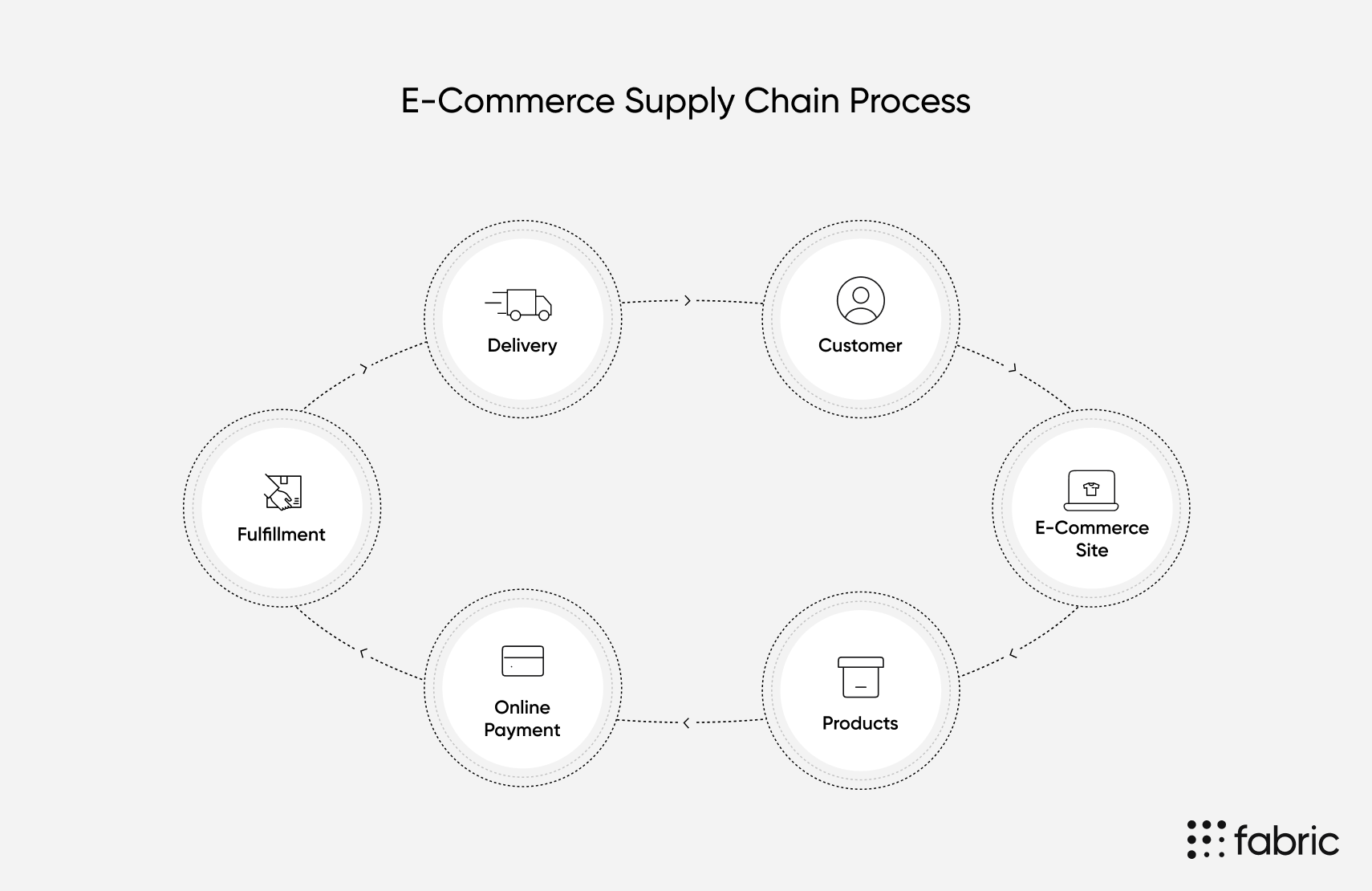How Does Your Supply Chain Impact E-Commerce?

E-commerce has increased consumers’ expectations. Nowadays, they expect to receive their orders immediately, especially with Amazon’s one-day delivery. As a result, companies have had to upgrade their supply chain management in e-commerce to meet consumers’ demands.
A well-managed e-commerce supply chain is integral to customer retention and revenue growth. According to Deloitte, 79% percent of e-commerce companies with superior supply chain management report above-average revenue growth. On the other hand, only 8% percent of companies with sub-par supply chains report above-average growth.
In this post, we’ll discuss how to optimize the costs of your e-commerce supply chain while continuing to meet consumers’ expectations.
[toc-embed headline=”Create an E-Commerce Supply Chain Network”]
Create an E-Commerce Supply Chain Network
The success of an e-commerce supply chain depends on how quickly you can deliver goods. For instance, more than 25% of shoppers abandon their online shopping cart if same-day shipping isn’t available. To provide speedy, inexpensive delivery, you need to know where your consumers are.

Connecting warehouse-related activities (products, fulfillment, and delivery) to your sales channels (e-commerce site) provides insight into where demand is coming from. By knowing where your customers are, you can place inventory closer to them. This allows you to offer efficient delivery options to your customers while optimizing costs.
Partnering with 3PLs
In some cases, demand will be coming from a variety of locations that exceed your resources. This is where partnering with a third-party logistics provider (3PL) can help. These 3PLs can handle many aspects of the e-commerce supply chain, such as inventory management, order fulfillment, packing, shipping, and return logistics.
For example, businesses that sell on Amazon can use Fulfillment by Amazon (FBA). Its biggest benefit is offering same-day shipping, which helps to boost revenue. However, when partnering with 3PLs, you lose control over how items are packed and shipped, opportunities to optimize costs.
How you fulfill orders depends on your resources and your customers’ demands. So, rather than using only one order fulfillment method, you can combine private warehousing and 3PLs to build an e-commerce supply chain network that reduces costs without having to compromise order fulfillment.
[toc-embed headline=”Minimize E-Commerce Supply Chain Disruptions”]
Minimize E-Commerce Supply Chain Disruptions
There are many moving parts in the e-commerce supply chain and various disruptions can occur, such as packing the wrong item or running out of stock. Any of these disruptions can contribute to revenue loss. Therefore, successful e-commerce supply chain management minimizes disruptions.
A common disruption is inaccurate address information when customers check out. This leads to late deliveries and wasted resources. Companies have lost $611 million in unneeded miles and $2.5 billion in salaries. On top of that, a company will lose potential revenue as consumers will find other brands when delivery is later than promised.
Using an order management system (OMS) software helps to avoid this. It validates customers’ addresses when they are creating an order. Furthermore, its event-driven architecture keeps customers updated on their orders for the entire lifecycle, an essential aspect of customer retention.
Overall, leveraging OMS software is key to a successful e-commerce supply chain. Here are other ways it can improve supply chain management in e-commerce:
- Helps merchants set up internal processes to meet customer commitments
- Automates inventory management, making order fulfillment scalable
- Functions as a strong data point to help with market forecasting
Another software that serves as a robust database is product information management (PIM). Analyzing data from PIM software ensures that the most popular products remain in stock to maximize revenue.
Here are other ways PIM software can impact e-commerce and supply chain management:
- Keeps product data consistent across channels
- Provides constant access to relevant and detailed product information
- Simplifies product search, inventory update, and data clean up
[toc-embed headline=”Key Takeaways”]
Key Takeaways
- 79% percent of e-commerce companies with superior supply chain management have above-average revenue growth, while only 8% percent of companies with sub-par supply chains report above-average growth.
- Optimize e-commerce supply chain costs by creating a supply chain network based on the location of your customers.
- Utilizing OMS and PIM software ensures minimal disruptions to the e-commerce supply chain and provides robust databases to help predict consumer demand.
- Leveraging fabric OMS and PIM help to ensure your supply chain management in e-commerce meets consumers’ high expectations.

Content marketer @ fabric. Previously marketing @ KHON-TV and Paramount Pictures.